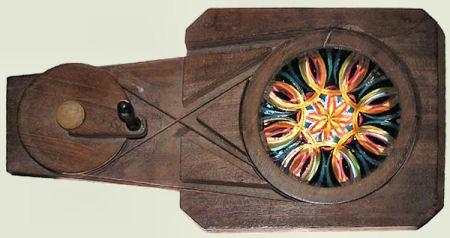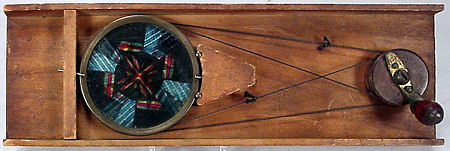Chromatrope 1841 - precursors of film and movie
Chromatrope, also known as the "artificial firework," was a revolutionary device developed in the mid-19th century. It was a mechanical magic lantern slide and an early medium for producing moving images. The chromatrope used a rackwork mechanism to revolve two glass discs and create complex visual effects. This simple device was capable of producing astonishingly intricate animations, making it one of the precursors of modern film and movies.
The chromatrope used a rackwork mechanism or twisted band to revolve two glass discs in opposite directions. These discs were painted with abstract patterns that, when viewed through the slides, filtered the light partially and produced astoundingly complex visual effects. The simplest effect was a pulsing or flashing effect, which was created when the unpainted points of the two slides lined up. By moving the position of the points out of sync, cross-rhythms were produced, extending the perceived period of the animation.
Most chromatropes combined many simple features to produce more complex visual effects. For example, reciprocal motion could be produced by painting one slide with a continuous oscillating pattern and the other with a spoke form. The dynamic bursting effect, for which the chromatrope earned its name "artificial firework," was created by using two slides each with a spoke pattern.
In conclusion, the chromatrope can be considered an important predecessor in the development of moving images and film. With its simple mechanism, it was able to create complex visual effects that astounded audiences in the 19th century. While it may not have the same level of sophistication as modern cinema, the chromatrope played a significant role in the evolution of visual storytelling. The historical significance of the chromatrope cannot be understated, as it helped lay the foundation for the art form we know and enjoy today.




Comments
Post a Comment